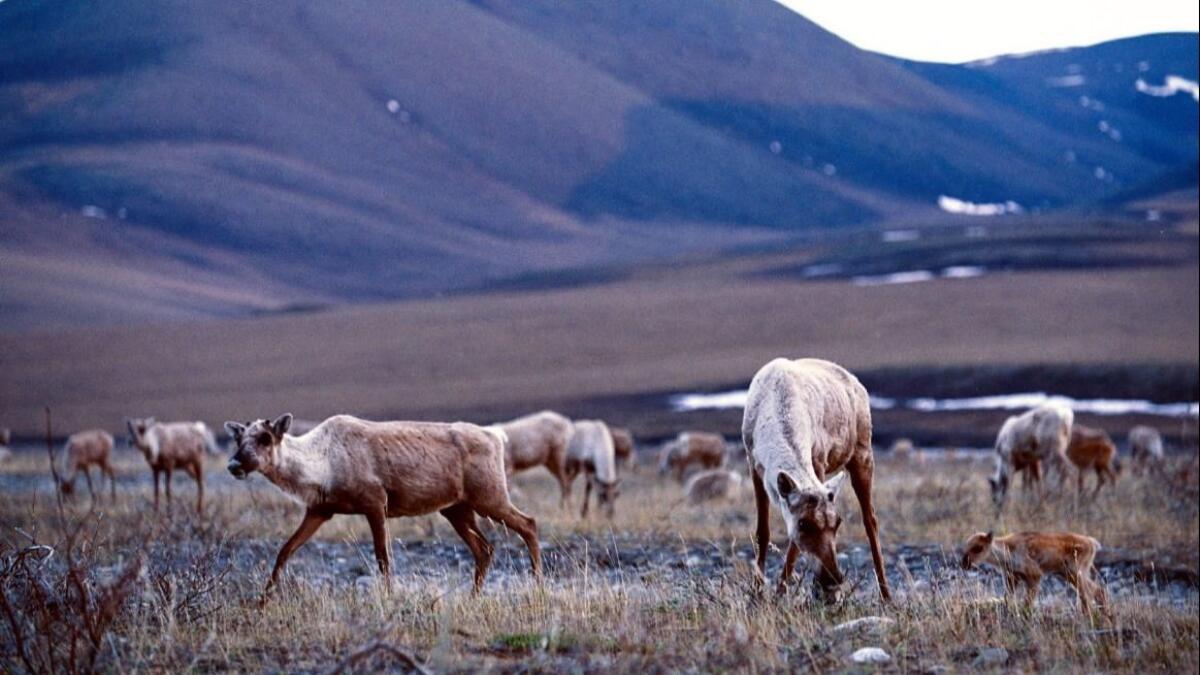Is this the year the Arctic National Wildlife Refuge will be targeted for oil drilling?

Much of the news out of the Arctic of late has been about efforts to protect the fragile region from new oil and gas development — but that may be about to change.
Less than a month after the Obama administration announced that it was banning offshore oil and gas production in most of the Arctic, there are new signs that a place many conservationists regard as the crown jewel of the Arctic — the coastal plain of the Arctic National Wildlife Refuge — could one day be open for drilling.
After decades of unsuccessful attempts to gain access to oil beneath the pristine coastal lowlands, Alaska’s Republican congressional delegation this week began yet another effort to open a region experts say may hold one of the nation’s largest reserves of oil and natural gas.
This time, however, there may be reason to expect a bill to actually pass and be signed into law.
“On a practical level, this might be the best opportunity we’ve had in a couple of decades to do what many people in Alaska thought should have happened years ago,” Andy Mack, commissioner of the Alaska Department of Natural Resources, said in an interview Friday. “Politically, in Washington, D.C., we have all the right folks in place.”
One of those folks, of course, is President-elect Donald Trump, who has promised to roll back regulations and expand oil and gas production on public lands. Another is U.S. Sen. Lisa Murkowski, who is now chairwoman of the powerful Senate Committee on Energy and Natural Resources.
On Thursday, Murkowski and Alaska’s junior senator, Daniel Sullivan, introduced Senate Bill 49, the Alaska Oil and Gas Production Act, which Murkowski’s office said “would allow limited oil and natural gas development” in areas of the coastal plain that are not federally declared wilderness.
Her office emphasized that the bill calls for a very small oil and gas footprint in a vast region, and said the legislation would only allow development on 2,000 “surface acres” within the 1.5-million-acre coastal plain, an area known as the “1002 area.” The plan would rely heavily on horizontal drilling from a limited number of platforms.
The entire refuge, which is the largest in the nation and extends inland to the Brooks Range, is about 19 million acres, larger than many states, Murkowski’s office noted.
According to a report by the United States Geological Survey from the late 1990s, beneath the coastal plain area lies between 5 billion and 16 billion barrels of technically recoverable oil. It may also include more than 8 trillion cubic feet of natural gas.
Yet the refuge is also home to small Alaska Native villages and an abundance of wildlife, including several rare and endangered species. Polar bears, musk oxen, scores of migratory bird species and more than 170,000 caribou roam the refuge. In 2015, President Obama recommended that Congress declare the area as protected wilderness, something lawmakers have not done.
Over time, the fate of the refuge has become one of the most divisive environment issues in the nation, though attention to it has waxed and waned depending on who is in the White House and whether there is industry pressure to develop it.
The new effort comes as Alaska, which relies heavily on oil production to fund state spending, has faced a $3-billion budget deficit amid declines in the older oil fields of Prudhoe Bay, which is to the west of the refuge on the North Slope. The Trans-Alaska Pipeline System, which delivers oil from the slope, has only been about one-fourth full in recent years. Mack and others said opening the refuge could help reverse the production slide, though it could take a decade for the area to begin consistent production — and there is no assurance the existing surveys are accurate about the level of reserves there.
Even if a bill passes, there are questions about whether energy companies will want to invest in a challenging region at a time when oil and gas prices are low, conservation groups are galvanized to fight and concerns about climate change are increasing.
“It’s still high cost, and I think people would expect a lot of legal delays,” said Michael Lynch, president of Strategic Energy & Economic Research, an industry consulting group. “That would become the next poster child of the climate change ‘keep it in the ground’ group that fought the Dakota Access pipeline and the Keystone XL pipeline.”
While the oil industry in Alaska has been generally supportive of opening the refuge, individual companies have focused on squeezing as much as they can out of Prudhoe Bay.
“After 20-plus years of the Congress fiddling with this issue and various administrations not being supportive, I think they’re going to wait for a clear signal that there’s going to be a lease sale,” Mack said of the industry. “Once they have access, I think people are going to be very excited. They’re going to want to see what’s there.”
One thing the industry would be sure to find is opposition. Environmental groups in Alaska and beyond, almost uniformly opposed to drilling in the refuge, can be expected to put up a fierce fight in Congress.
And while some Alaska Native groups support drilling because it could mean jobs and revenue for their communities, others oppose it, citing concerns about record Arctic heat linked to climate change and threats drilling could pose to their subsistence hunting, fishing and gathering traditions.
“Hunting our animals for food, clothing and tools is part of our identity as Natives and we cannot risk losing that,” Bernadette Demientieff, who represents a group of indigenous Gwich’in people from the area, wrote in an email Friday. “We must protect what is left and keep our land and animals healthy for future generations.”
ALSO
Congress begins to search for funds to help Trump build border wall
Texas may be in for a fight over transgender bathrooms like the one raging in North Carolina










